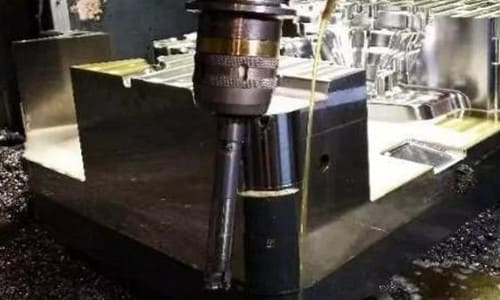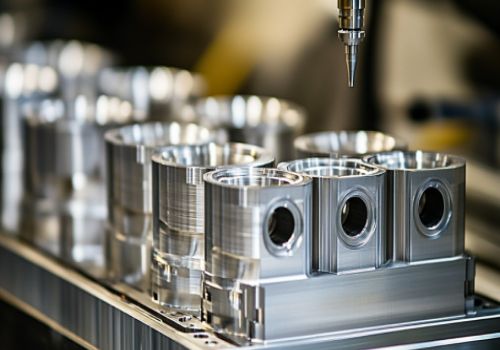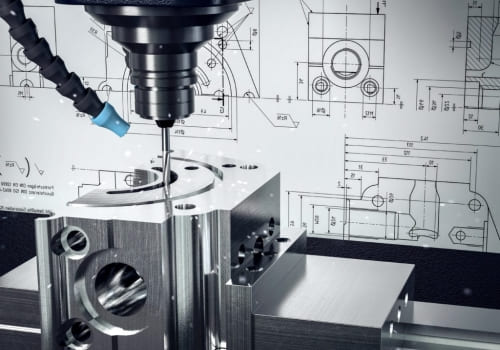In CNC machining, the problems that you often encounter are bouncing, hitting, over-cutting, etc. This article talks about the solutions to these common problems, hoping to draw inferences from one another.
1. Bouncing
Bouncing cutter refers to the relatively large vibration of the tool due to excessive force. The hazard caused by bouncing cutter is to cause over-cutting of the workpiece and damage to the tool. When the tool diameter is small and the tool shaft is too long or the force is too large, the phenomenon of bouncing cutter will occur. If a reasonable tool and processing method are used, the chance of bouncing cutter can be reduced.
There are three main factors affecting tool deformation:
1) Length of cutting tool
2) Tool diameter
3) The force of the tool
1. Length of cutting tool
For a tool of the same diameter, when the length of the tool is doubled, its deformation will increase by 3 times. When processing, shorten the length of the tool as much as possible to reduce the risk of bouncing cutter.
2. Tool diameter
For the tool of the same length, when the tool diameter is reduced by one time, its deformation will increase by 4 times. When processing, if possible, choose large-diameter tools or use reinforced tools for processing as much as possible to reduce the risk of bouncing cutter.
3. The force of the tool
The deformation of the tool is directly proportional to the force it receives during processing. Reducing the force received by the tool can reduce the chance of bouncing cutter. To reduce the force on the tool, it is necessary to reduce the contact area between the tool and the workpiece.
2. Hitting
Hitting cutter means that the cutting amount of the tool is too large. In addition to the cutting edge, the tool bar also hits the workpiece. The main reasons for the tool collision are the unreasonable safety height setting or the safety height not set at all, the improper processing method selected, the improper use of the tool, and the margin setting for the second roughing is smaller than the margin for the first roughing setting, etc.
2.1 Too much cutting amount
Solution:
Reduce cutting amount. The smaller the diameter of the tool, the smaller cutting amount that should be eaten. Under normal circumstances, cutting amount for each rough opening of the mold is not more than 0.5mm, and cutting amount for semi-finishing and finishing is smaller.
2.2 Improper machining method
Change the mode of contour milling to the mode of cavity milling. When the machining allowance is greater than the tool diameter, the contour milling method cannot be selected.
2.3 Improper safety height setting, hitting the clamping while lifting the tool
Solution:
(1) The safety height should be greater than the clamping height.
(2) In most cases, it is not possible to select the “direct” tool advance and retreat mode, except for special workpieces.
2.4 Improper setting of secondary roughing margin
The margin for the second roughing should be generally 0.05mm larger than the margin for the first roughing. If the margin of the first roughing is 0.3mm, the margin of the second roughing should be 0.35mm. Otherwise, the tool bar will easily hit the upper side wall.
In addition to the above-mentioned reasons, hitting cutter may occur when trimming tool path, so try not to trim tool path. The most direct consequence of hitting cutter is damage to the tool and workpiece, and more serious damage to the spindle of the machine tool.
3. Overcutting
Overcutting means that the tool also cuts the parts that cannot be cut, causing the workpiece to be damaged. There are many reasons for the over-cutting of the workpiece, mainly including the low precision of the machine tool, hitting cutter, bouncing cutter, improper tool, etc. In addition, if the operator is not accurate in setting the tool, it may also cause overcutting.
When programming, you must be careful and meticulous. After completing the program, you need to check the tool path in detail to avoid the occurrence of overcutting.
As a professional CNC machining manufacturer, DO Machining not only produce metal parts, but plastic and wood parts are also available.
Please visit our CAPABILITIES and what PRODUCTS we did.
CNC machining service is the core business of DO Machining, from protptyes to bulk production, our professional 3/4/5 aixs CNC machining centers, CNC turning equipments, CNC turning-milling equipments, CNC grinding machines etc., are operated by well trained manufacturing engineers to meet the demands from global 1000+ customers in 30+ industries.
CNC Machining can be done starting with blanks produced from standard bar stock or one of DO Machining other manufacturing processes.
Contact us to see how we can provide overall value to your CNC machining needs.









